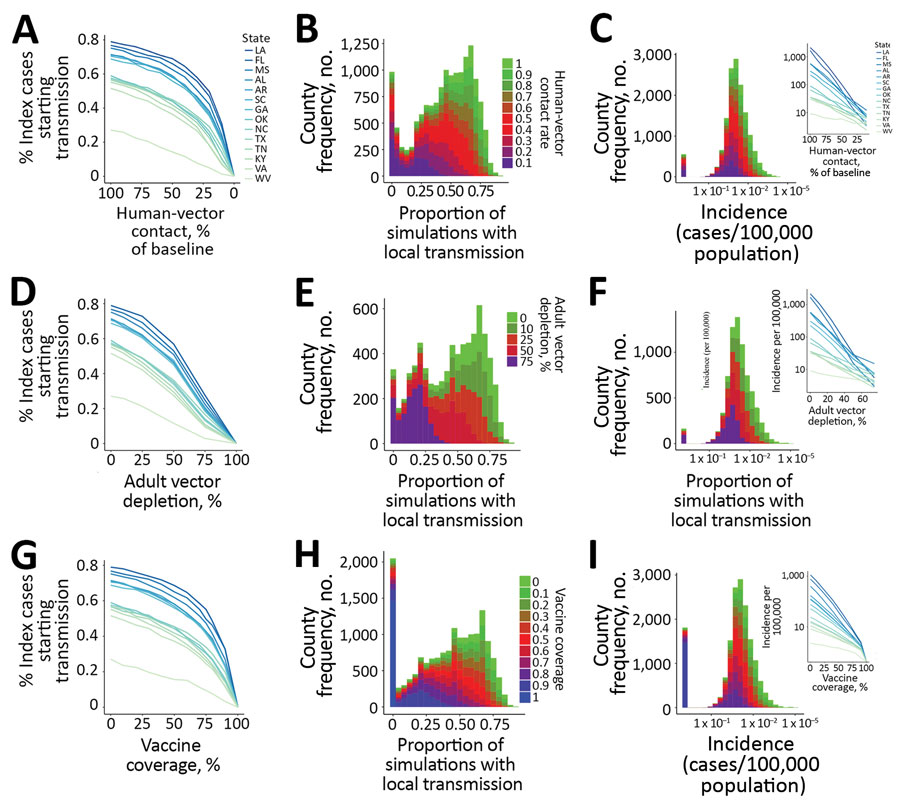Volume 26, Number 4—April 2020
Research
Comprehensive Profiling of Zika Virus Risk with Natural and Artificial Mitigating Strategies, United States
Figure 3

Figure 3. Zika prevention and control strategies, United States. For each county in the United States including Puerto Rico, classes of prevention or control strategies were assessed, including (A–C) reductions in human–vector contact, (D–F) adult vector depletion, and (G–I) vaccination. A, D, G) Proportion of index cases initiating >1 transmission event versus extent of each intervention. Each line represents the statewide average across each of the constituent county’s median simulations. B, E, H) Histograms depicting number of counties versus probability of permitting >1 transmission event from the index case, color coded by the level of each respective intervention. C, F, I) Histogram showing the number of counties versus incidence across levels of respective intervention (color coding as in panels B, E, and H). Insets in panels C, F, and I show incidence (on a log-linear scale) versus extent of each respective interventions.
1These authors contributed equally to this article.